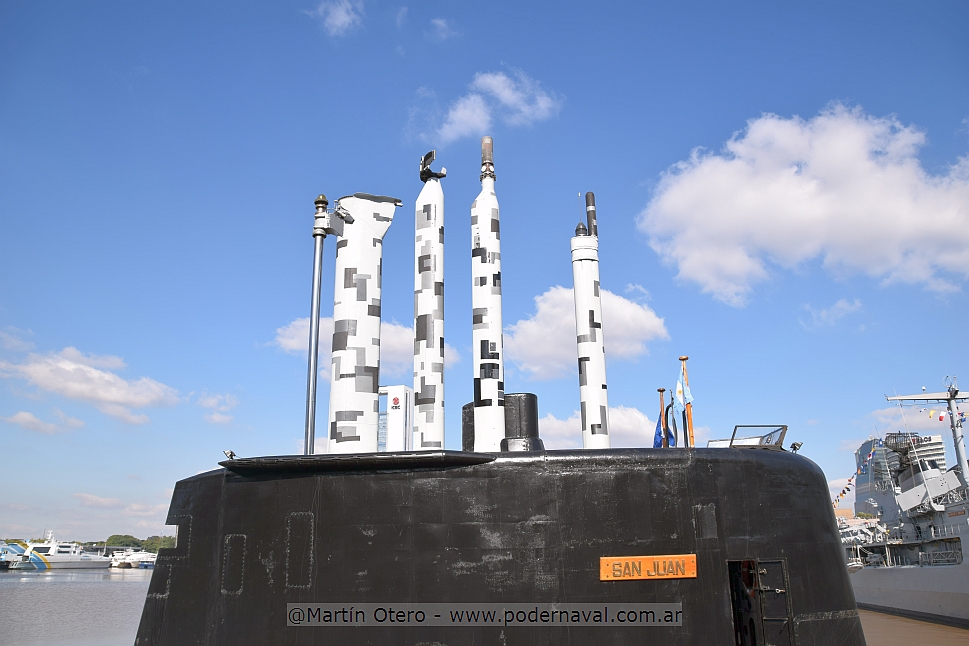Derruido
Colaborador
Pero con un diseño tan bonito, nó.Supieron estar camuflados los "mastiles" de los TR...
Besos
PD: Y utilicé la palabra bonito, medio aputonado lo dije.
Pero con un diseño tan bonito, nó.Supieron estar camuflados los "mastiles" de los TR...
Qué será de la vida de ese otro mentiroso serial????miento!, el dato me lo paso sut.
desconozco.Qué será de la vida de ese otro mentiroso serial????
Es más, Tano, los S-2E en Malvinas se usaron para exploración y detectar a la Task Force inglesa, y creo que no emitían con el radar, usaban el analizador de espectros civil que les agregaron, que resultaba ser más efectivo.entonces es al pedo que un avion ASW le pongan un radar de busqueda, no?
si, trabajaron con esm para triangular la posicion, porque si emitian, las emisiones de su radar iban a ser identificadas por la task force destachabandose el grupo de tareas argentino.Es más, Tano, para los S-2E en Malvinas se usaron para exploración y detectar a la Task Force inglesa, y creo que no emitían con el radar, usaban el analizador de espectros civil que les agregaron, que resultaba ser más efectivo.
Así es, estuvieron en la Base Naval de Augusta, en Sicilia.Las Mekos 360 y 140 cuando fueron al Golfo, antes tuvieron que parar en una Base. No sé si era Italiana, para hacerles ese tratamiento.
mmmm.....ahora que decis La Spezia me agarran dudas, pero estaba seguro que fueron a Augusta.A su vez, permitió incorporar equipos de comunicaciones de la US Navy en la base de Rota (Reino de España) y efectuar el degaussing (medición y calibrado de firma magnética para la guerra de minas) en el polígono de La Spezia (Italia).
https://www.taringa.net/+info/destructores-clase-meko-360-de-la-armada-argentina_xb08l
pero en las aeronaves se les hace para que no corran riesgos cuando amerizan sobre el buque.El MAD es muy utilizado y a las aeronaves tambien se les hace degaussing.
Nunca vi un P-3 amenizar sobre un buque...pero en las aeronaves se les hace para que no corran riesgos cuando amerizan sobre el buque.
No...pero en las aeronaves se les hace para que no corran riesgos cuando amerizan sobre el buque.
hombre de poca fe!!!!Nunca vi un P-3 amenizar sobre un buque...
si, los helicopteros principalmente es por eso, ya que no se necesita hacer desauri, desgua...bueno eso, porque el mad se desprende del helicoptero separandose por cable, donde no le afecta el cuerpo metalico de la aeronave.No...
Podria llegar a ser...no estoy al tanto con helos. Pero es muy posible que te refieras a los MAD de precesión nuclear, ya que a estos no les afecta el campo magnetico exterior.si, los helicopteros principalmente es por eso, ya que no se necesita hacer desauri, desgua...bueno eso, porque el mad se desprende del helicoptero separandose por cable, donde no le afecta el cuerpo metalico de la aeronave.
diferente es el caso de los p3, neptune, y la mar en coche porque a ellos le es imposible separar el mad de la aeronave por la velocidad de desplazamiento. es por eso que el mad esta colocado lo mas alejado posible de la celula y se "desguazoriza" el avion.
en cambio el helicoptero, al tener una carga estatica alta (por su motor, la vibración y la atmosfera) puede generar un arco voitaico con el buque cuando esta en procedo de amerizar.
Mucho análisis con el diario de lunes...
Tano, en la foto que te adjunto están los "mástiles" del desaparecido ARA San Juan. No está el periscopio de ataque que se parece al "tubo" de atrás del snorkel.
Ningún radar, puede detectar esos tubos!

